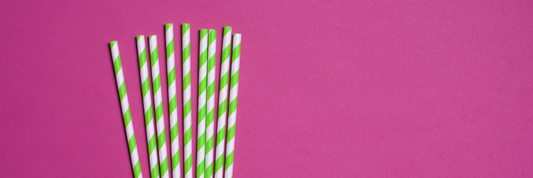Choosing the right bread bag can impact freshness, taste, and presentation. This guide helps you select the ideal size, closure, durability, and aesthetic. From paper to cloth, each material offers unique advantages. We'll equip you with the knowledge to choose the best bread bag for your needs.
- Bread Bags vs. Bread Boxes: Which Is Better for Storage Bread?
- Do Bread Bags Keep Bread Fresh?
- Paper Bread Bags vs. Reusable Bread Bags: Which Is Eco-friendlier?
Factors to Consider When Choosing Bread Bags
Selecting the best bread bags requires careful consideration of several factors. This section will delve into these key considerations.
Material
- Paper: While offering a biodegradable and eco-friendly option, paper bags may exhibit lower durability and susceptibility to moisture. This can lead to premature spoilage of your bread, especially if it's stored in humid conditions.

- Plastic: Despite their durability and waterproof properties, plastic bags can contribute to environmental concerns and may not provide the same breathability as alternative materials. This can affect the texture and taste of your bread, as it may become soggy or stale.
- Cloth: Reusable cloth bags present a sustainable and customizable choice, though they may require additional maintenance. These bags are typically made from durable materials like cotton or linen, and can be easily washed and reused. They also offer the flexibility to personalize them with designs or patterns.

Size
- Bread Loaf Dimensions: Accurately measure the length, width, and height of your bread loaves to ensure optimal fit. This will help prevent the bread from being crushed or damaged, and ensure that it stays fresh for longer.
- Storage Space: Assess the available space within your kitchen or pantry for storing bread bags. If you have limited space, you may want to consider smaller bags that can be easily stacked or stored in a drawer.
- Frequency of Use: If you regularly purchase bread, a larger or multiple smaller bags may prove more convenient. This will help you avoid running out of bags and ensure that your bread is always stored properly.
Closure
- Twist Ties: Simple and effective, yet prone to messiness and potentially offering less secure seals. Twist ties can be difficult to tie tightly, and may come undone over time. This can allow air to enter the bag, which can cause the bread to dry out or become stale.
- Drawstrings: Secure and adjustable, but may be challenging to tie tightly. Drawstrings can be a good option for larger bread loaves, but they may be difficult to tie tightly, especially if the bread is heavy. This can allow air to enter the bag, which can cause the bread to dry out or become stale.
- Zippers: Providing a reliable and user-friendly closure, zippers may be more susceptible to damage. Zippers are a good option for smaller bread loaves, and they are easy to open and close. However, zippers can be damaged over time, especially if they are not used properly.
- Velcro: Offering a fast and convenient closure, Velcro may generate noise and potentially compromise security. Velcro is a good option for people who are always on the go, but it may not be the best choice for people who want to keep their bread as fresh as possible. Velcro can be noisy, and it may not provide a completely secure seal.
Durability
- Material Quality: Select bags constructed from durable materials capable of enduring repeated use. This will help ensure that your bags last for a long time, and that you don't have to replace them frequently.
- Construction: Inspect the seams, handles, and overall construction for any signs of weakness. This will help you identify any potential problems before you purchase the bags.
- Brand Reputation: Research the brand's reputation for producing high-quality products. This will help you choose a brand that is known for making durable and reliable bread bags.

Environmental Impact
- Sustainability: Prioritize bags made from recycled or biodegradable materials to minimize environmental impact. This will help reduce your carbon footprint and help to protect the planet.
- Reusable vs. Disposable: Evaluate the long-term benefits of reusable bags compared to disposable options. Reusable bags are a much more sustainable option than disposable bags, and they can help you save money in the long run.
- Ethical Sourcing: Support brands committed to ethical and sustainable practices. This will help ensure that your bread bags are made in a way that is fair to workers and the environment.
Aesthetics
- Personal Preference: Choose bags that align with your personal style and kitchen decor. This will help you create a cohesive look in your kitchen.
- Branding Opportunities: For businesses, consider custom-branded bags as a promotional tool. This can be a great way to increase brand awareness and attract new customers.
Tips for Choosing the Right Bread Bags
Consider Your Lifestyle and Needs
- Frequency of Bread Purchase: Evaluate your bread consumption patterns to determine the optimal bag size and quantity.
- Storage Space: Assess your kitchen's storage capacity to select bags that fit seamlessly into your existing organization.
- Environmental Considerations: If sustainability is a priority, opt for reusable or eco-friendly materials.
- Aesthetic Preferences: Choose bags that complement your kitchen's overall design and decor.
Conduct Thorough Research
- Online Reviews and Ratings: Explore customer feedback on various bread bag brands and models.
- Social Media Platforms: Seek recommendations and experiences shared by others.
- Specialized Websites: Consult websites focused on kitchenware and baking for expert opinions.
Test Different Types of Bread Bags
- Material Comparison: Experiment with paper, plastic, and cloth bags to identify your preferred material based on durability, breathability, and environmental impact.
- Closure Evaluation: Try twist ties, drawstrings, zippers, or Velcro to determine the most convenient and secure closure for your needs.
- Size Assessment: Test different bag sizes to ensure proper fit for your bread loaves, preventing damage and maintaining freshness.
Prioritize Value and Budget
- Set a Budget: Establish a financial limit for your bread bag purchase.
- Compare Prices: Research prices across different brands and retailers to find the best value.
- Evaluate Features: Consider durability, features, and environmental impact when comparing prices.
By carefully considering these factors, you can make an informed decision and select the bread bags that best meet your lifestyle, preferences, and budget.
Conclusion
Choosing the right bread bag is important for preserving freshness and taste. Consider factors like material, size, closure, durability, environmental impact, and aesthetics. Research options, read reviews, and consider your budget to make an informed decision. The right bag can enhance your baking experience.









